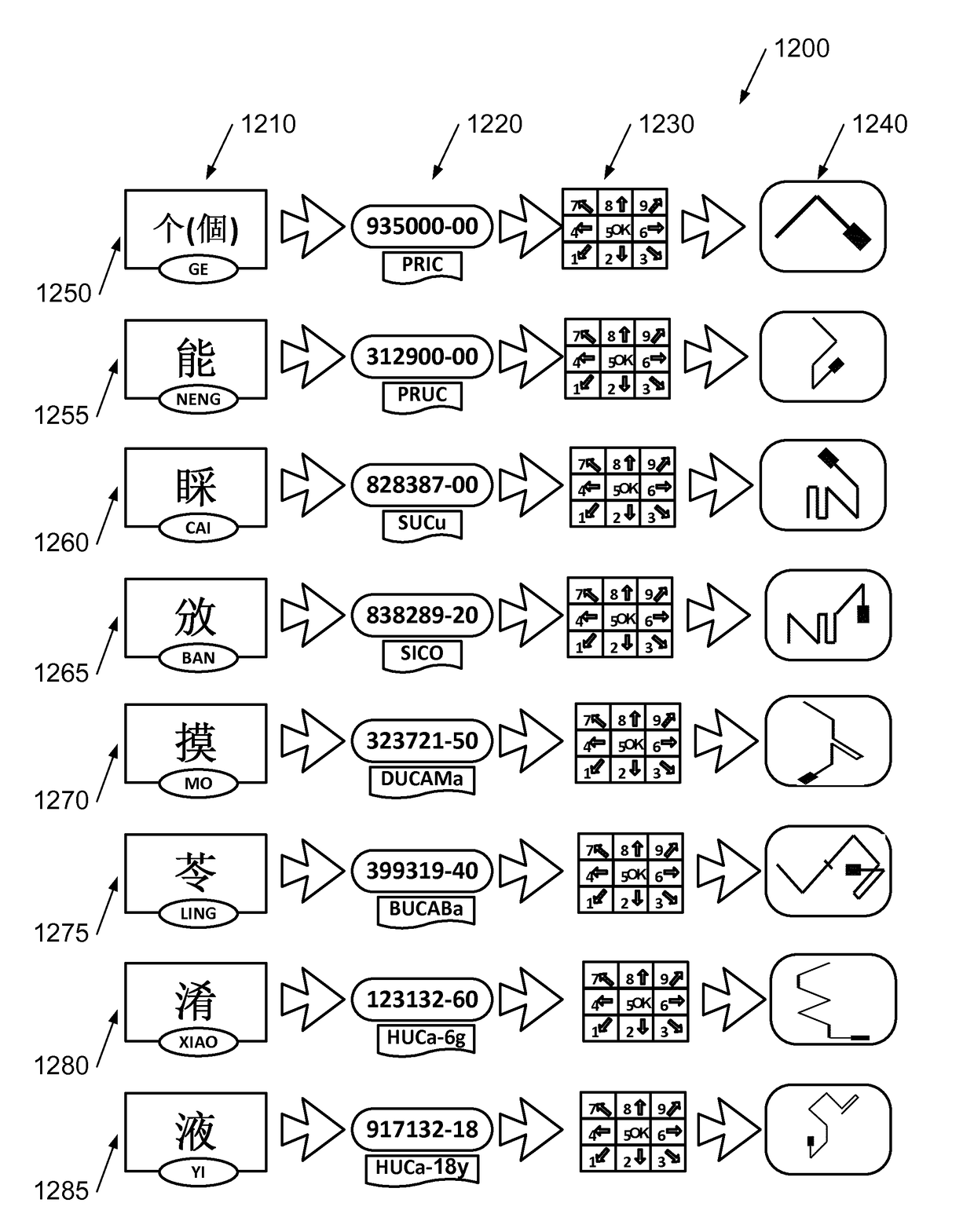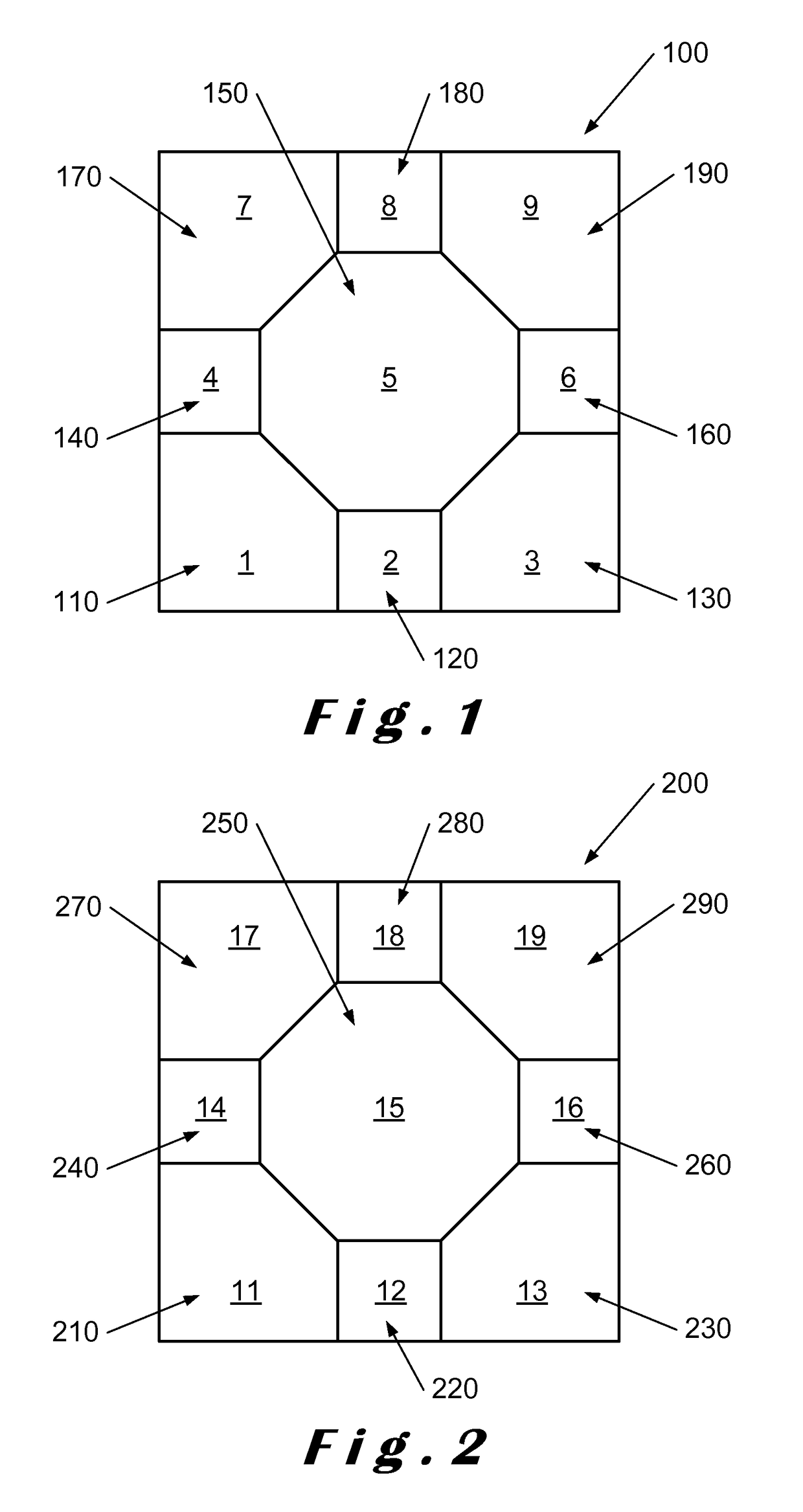Input of characters of a symbol-based written language
a written language and input technology, applied in the field of input of oriental characters, can solve the problems of complex chinese characters, and inability to provide such a clear, unambiguous and defined set of units in the chinese writing system
- Summary
- Abstract
- Description
- Claims
- Application Information
AI Technical Summary
Benefits of technology
Problems solved by technology
Method used
Image
Examples
Embodiment Construction
[0142]The present invention will be described with respect to particular embodiments and with reference to certain drawings but the invention is not limited thereto. The drawings, which comprise flowcharts, described and / or referred to are only schematic and are non-limiting. In the drawings, the size of some of the elements may be exaggerated and not drawn to scale for illustrative purposes.
[0143]Although the present invention and the particular embodiments will be described below with reference to Chinese characters in their simplified form (jianti zi) and in their traditional form (fanti zi) and also to Pinyin, the official Latin alphabetical phonetic transcription system for the 412 phonemes of the Putonghua Chinese language, the official spoken language of the People's Republic of China, and which is called Guoyu in Taiwan and Huayu in Singapore, this is not meant to limit the scope of the invention.
[0144]The invention may also be applied to other symbol-based languages. In add...
PUM
 Login to View More
Login to View More Abstract
Description
Claims
Application Information
 Login to View More
Login to View More - R&D
- Intellectual Property
- Life Sciences
- Materials
- Tech Scout
- Unparalleled Data Quality
- Higher Quality Content
- 60% Fewer Hallucinations
Browse by: Latest US Patents, China's latest patents, Technical Efficacy Thesaurus, Application Domain, Technology Topic, Popular Technical Reports.
© 2025 PatSnap. All rights reserved.Legal|Privacy policy|Modern Slavery Act Transparency Statement|Sitemap|About US| Contact US: help@patsnap.com



